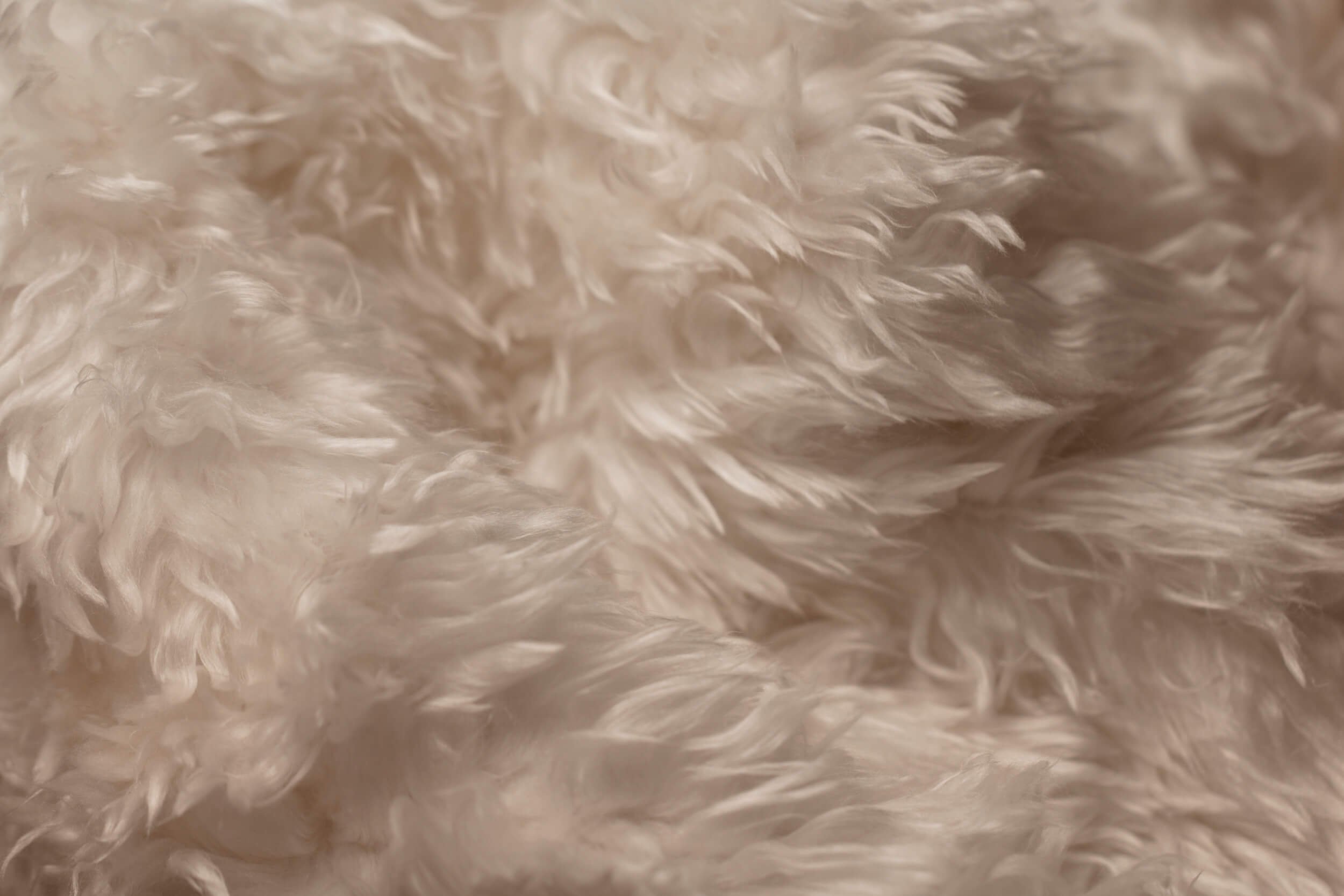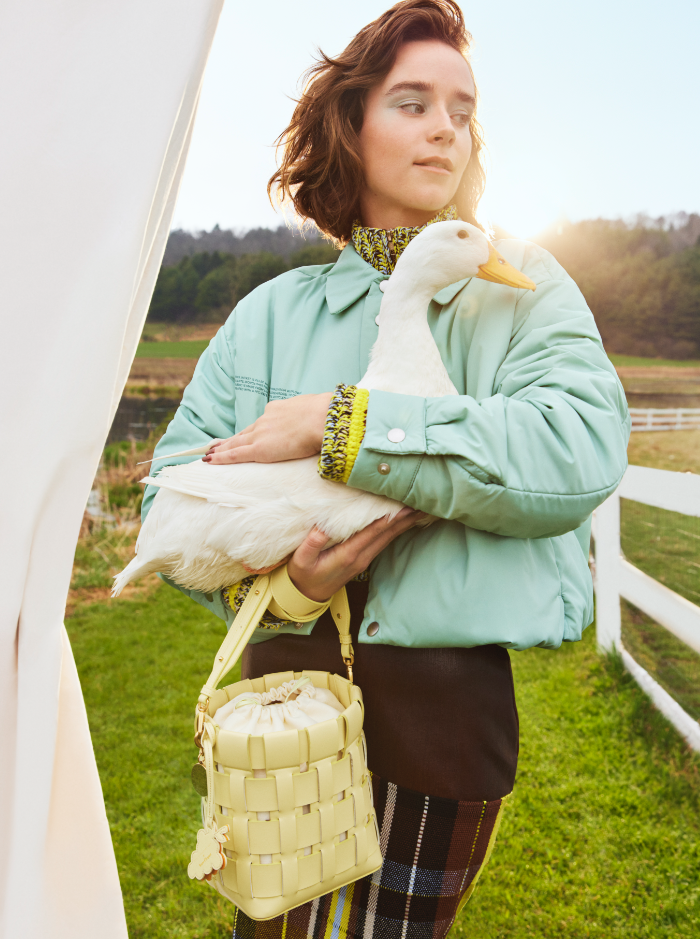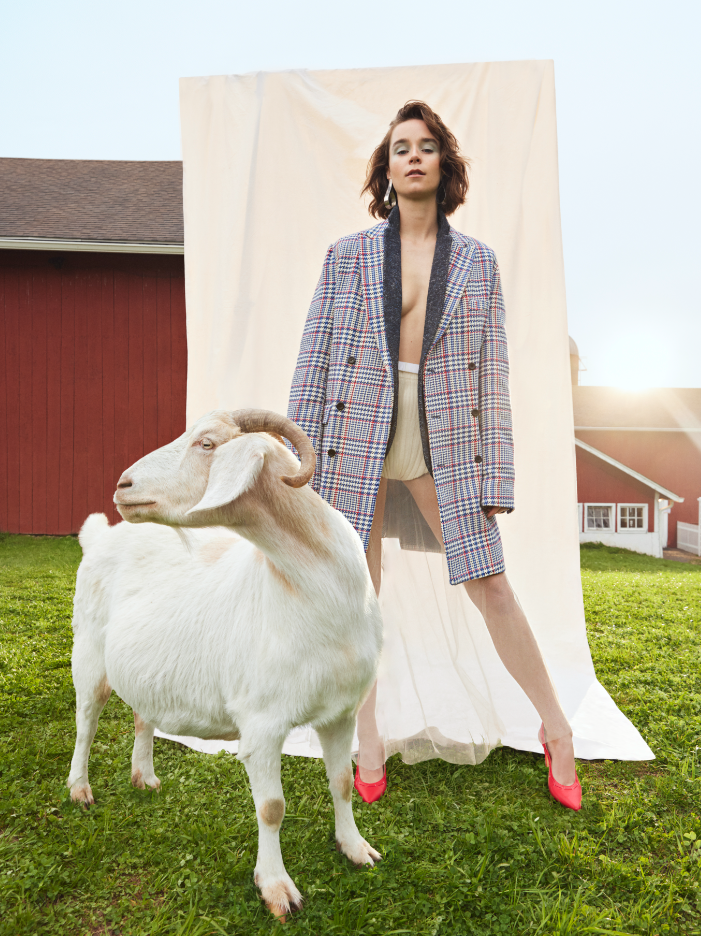As published in No Kill Magazine, our editorial imagines a fashion industry where animals coexist with us on a healthy planet, while we wear plant-based, bio-based, microbial, recycled and other innovative materials.
Executive produced by Alexi Lubomirski, with creative direction and modelling by our founding director, Emma Hakansson.
Photographed at Tamerlaine Sanctuary for rescued animals.
Wiley the peacock is mirrored in the animal-free decoration of a Mara Hoffman dress (Tencel and organic cotton), Swedish Stockings tights (recycled synthetics), AERA shoes (low-impact denim) and pre-2015 Alexis Bittar bangles.
Shilo and Alina wear wool while Emma wears a BioFluff plant-based shearling coat, organic and native Peruvian cotton knitwear from Mila.Vert
and Quispe from Paz Lifestyle, Mara Hoffman bustier (Tencel and organic cotton), Sentient bag (made from plastic-free MIRUM),
GANNI boots (recycled rubber), and Pamela Love jewellery (recycled metals).
Plastic-free, bio-based and recycled fur alternatives are increasingly available and developing, and an array of vintage, animal-free fur can continually be used for circular fashion. Emma wears vintage Calvin Klein faux from Allbright Fashion Library, Made for a Woman dress (natural raffia), and Misahara recycled metal jewellery.
Paddles wears feathers and Emma wears a PANGAIA jacket made with FLWRDWN from wild flowers, with Mozdeh Matin knitwear and skirt (Peruvian cotton, shiringa bio-leather), Stella McCartney bag (partly made with wine waste biomaterial) and Pamela Love earrings (recycled metals).
Emma stands with Cashew wearing Mozdeh Matin pants and jacket (Indigenous shiringa rubber), Vegan Tiger jacket (Desserto’s partly cactus-derived leather), Sylven New York boots (partly apple-based leather), Murmali bag (natural cork), Brave GentleMan belt (MIRUM) and jewellery from Pamela Love (recycled metals) and Allbright Fashion Library.
Rather than cashmere, waste-diverted cotton and recycled Brazilian plastic waste compose Brave GentleMan coats and blazers, worn alongside Reformation bottoms (organic cotton), COMME des GARÇONS tulle pants and earrings from New York Vintage, and Sylven New York heels (AppleSkin).
All featured brands have made a commitment to living wages, too.
The exploitation and ultimate slaughter of animals, and so a denial of their autonomy and right to life, is rife in fashion. It is inherently connected to the plundering of our planet and human exploitation.
But there is a future of fashion in which we are more creative and responsible than this.
This future of fashion protects people, our fellow animals and the planet.
This total ethics fashion future is also more inventive and creative, making use carefully grown and traditionally used plant materials, upcycled and recycled, bio-based, microbial, and cellular materials.
Learn more about total ethics fashion and our manifesto.
-

Brands can transform our relationship with other life on Earth by committing to exploration and transition to next-generation materials better for people, animals and the planet.
Collective Fashion Justice supports brands and businesses by taking a design-informed approach to improved ethics and sustainability, consulting on material sourcing strategies, target setting, sustainability communication and policies that benefit us all.
(Image: BioFluff)
-

Our total ethics fashion approach recognises that people, animals and the planet alike must be protected, alongside the creativity and heritage of fashion as artistry.
We can make progress while respecting tradition: a leather goods brand with strong tannery relationships could explore green-chemistry processing of mycelium rather than skins. We work with brands to explore just transition opportunities that are responsible and profitable, in line with our manifesto.






